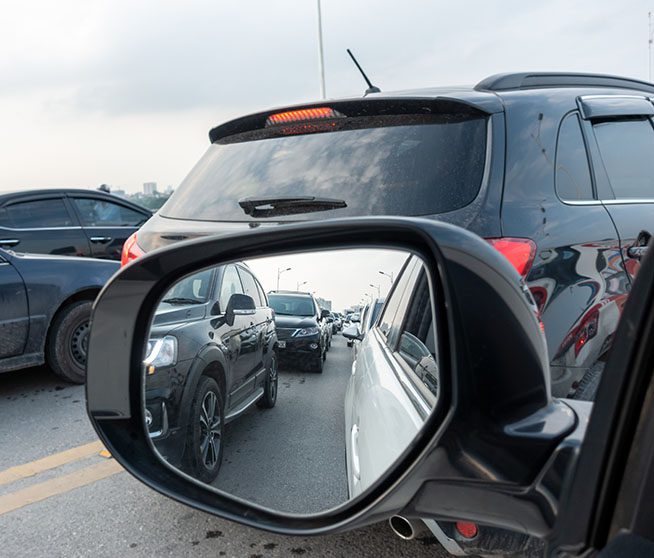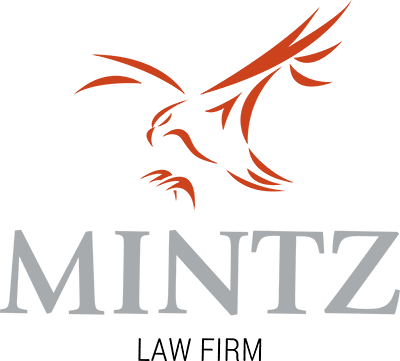Who Is At-Fault for a Blind Spot Accident?

Blind spot accidents on Colorado’s roads can be frightening and life-altering events. As vehicles traverse highways and streets, drivers must remain vigilant and aware of their surroundings to prevent collisions. However, despite the best intentions, blind spot accidents can occur when a driver fails to spot another vehicle in their blind spot while changing lanes or making a turn. Determining fault in such accidents can be a complex process involving an analysis of various factors and state-specific laws.
At Mintz Law Firm, our dedicated team of personal injury attorneys is well-versed in Colorado’s laws and regulations surrounding blind spot accidents. We are committed to providing compassionate and competent legal assistance, and we strive to ensure that our clients receive the compensation they deserve for their injuries and damages. Let our expert lawyers fight for your rights while you focus on healing and rebuilding your life after the accident.
Understanding Blind Spot Accidents
Blind spots are areas around a vehicle that are not visible to the driver through their mirrors. These areas can be especially hazardous as they can obscure other vehicles, pedestrians, or cyclists. Blind spot accidents commonly occur when a driver changes lanes or makes a turn without adequately checking their blind spot. This negligence can result in collisions, sideswipes, or rear-end accidents, depending on the specific situation.
Comparative Fault in Colorado
Colorado follows a “modified comparative fault” rule when it comes to determining liability in accidents. This means that fault can be allocated to multiple parties involved in the accident, and the damages awarded are reduced based on each party’s percentage of fault.
In Colorado, an injured party can recover damages as long as their percentage of fault is less than 50%. If their percentage of fault is 50% or more, they may not be eligible to recover any damages from the other parties involved. Therefore, even if a driver is found partially at fault for a blind spot accident, they may still be able to seek compensation from other at-fault parties.
Factors Considered in Determining Fault
Several crucial factors are taken into account when determining fault in a blind spot accident in Colorado, such as:
- Lane Change Signal: Did the at-fault driver use their turn signal before attempting to change lanes or make a turn? Proper signaling gives other drivers a chance to react and adjust their speed or position accordingly.
- Check for Blind Spots: Did the at-fault driver conduct appropriate checks for blind spots? Failing to check the blind spot before making a maneuver can be strong evidence of negligence.
- Speed: The speed of the vehicles involved in the accident can impact the assessment of fault. If the at-fault driver was driving at an excessive speed, they may be deemed more responsible for the collision.
- Right-of-Way: Determining whether any driver involved in the accident had the right of way can be crucial in determining fault.
- Following Distance: Tailgating or following too closely can be a contributing factor to a blind spot accident. Drivers are expected to maintain a safe following distance to have sufficient reaction time.
- Witness Statements and Police Reports: Eyewitness accounts and official police reports can provide valuable insight into the sequence of events and help establish fault.
- Video Footage: In some cases, video footage from dash cams or surveillance cameras may be available, providing a clear depiction of the events leading up to the accident.
Blind spot accidents can result in significant damage, injuries, and even fatalities. Evaluating factors such as lane change signal usage, following distance, and the available evidence is crucial in determining fault.
Contact An Experienced Car Accident Lawyer at Mintz Law Firm
Determining fault in a blind spot accident in Colorado requires a thorough examination of various factors and available evidence. Mintz Law Firm is here to support you through the process.
Our experienced personal injury attorneys have a deep understanding of Colorado’s laws, and we are dedicated to advocating for your rights and securing the compensation you deserve. Don’t hesitate to reach out for a free consultation today and let us help you navigate the legal landscape, so you can focus on healing and moving forward with confidence. Call us today at (303) 462-2999 or visit our website to complete our online contact form.
